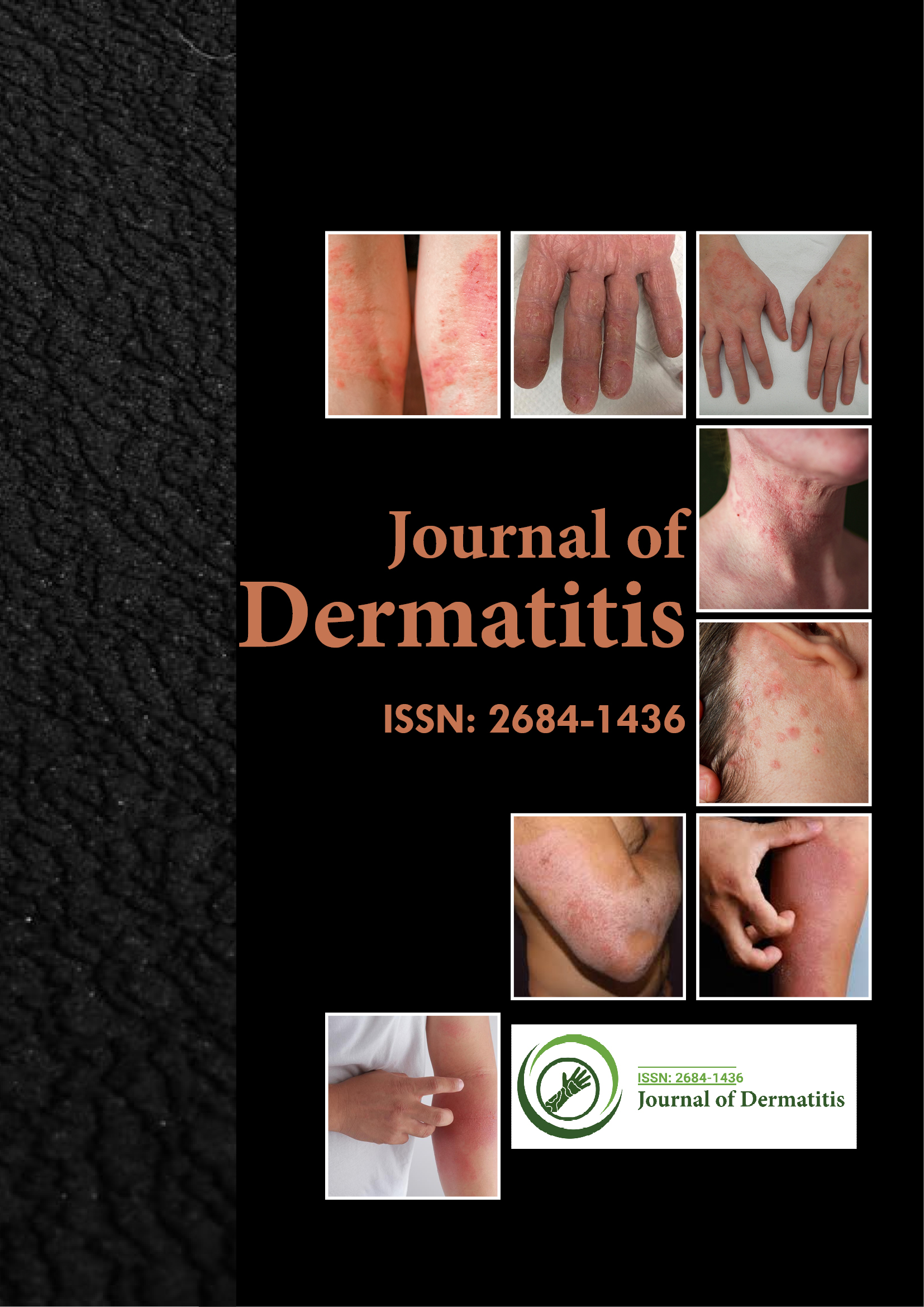Indexed In
- RefSeek
- Hamdard University
- EBSCO A-Z
- Euro Pub
- Google Scholar
Useful Links
Share This Page
Journal Flyer

Open Access Journals
- Agri and Aquaculture
- Biochemistry
- Bioinformatics & Systems Biology
- Business & Management
- Chemistry
- Clinical Sciences
- Engineering
- Food & Nutrition
- General Science
- Genetics & Molecular Biology
- Immunology & Microbiology
- Medical Sciences
- Neuroscience & Psychology
- Nursing & Health Care
- Pharmaceutical Sciences
Editorial - (2022) Volume 7, Issue 1
A Short Description on Atopic Dermatitis
Lansari Thorray*Received: 03-Jan-2022, Manuscript No. JOD-22-e146; Editor assigned: 05-Jan-2022, Pre QC No. JOD-22-e146; Reviewed: 19-Jan-2022, QC No. JOD-22-e146; Revised: 24-Jan-2022, Manuscript No. JOD-22-e146; Published: 31-Jan-2022, DOI: 10.35248/2684-1436.22.7.e146
Description
Atopic dermatitis, often known as Simple Lichen Planus (LSC), is a localized skin condition characterized by repeated itching and scratches. Repeated scratches can lead to the development of a characteristic plaque known as ringworm and thickening of the skin. Scratches make it even itchier. This itching cycle makes the affected skin thick and leathery. There may usually be multiple itchy spots around the neck, wrists, forearms, legs, or anus. This is a common type of eczema, affecting about 12% of the population. Other systemic disorders, such as psoriasis, a chronic autoimmune disease that causes skin inflammation, and lichen planus, an immune-mediated disorder that manifests as rashes, can also cause persistent skin inflammation. Finally, eczema is generally caused by underlying environmental or skin factors, but is often associated with psychiatric disorders that exhibit repetitive behavior or psychological rumination (obsessive-compulsive disorder, anxiety, depression, etc.). Eczema can easily become a chronic debilitating condition. When a person scratches an inflamed area, it becomes more and more inflamed and prone to itching, creating a continuous cycle of scratching and itching, which can eventually lead to thickening of the skin. Itching and itching cycles in eczema are difficult to break, and eczema is usually a lifelong condition. Successful treatment depends on resisting the urge to rub or scratch the affected area. Over-the-counter and prescription medications can help relieve itching. You also need to identify and eliminate factors that can exacerbate the problem. Eczema can also be caused by tight clothing (especially wool and synthetic fibers), insect bites, nerve damage and dry skin.
Symptoms of neurodermatitis
Atopic eczema can appear anywhere that can be scratched, but it is most common on the feet, ankles, hands, wrists, elbows, shoulders, neck, and scalp. The eyelids can also be affected, and the genital and anal areas can also be affected. Itching may come in and out or be active all the time. People often feel the most itchy when they are relaxing, trying to sleep, or feeling stressed or anxious. Thick, leather-like patches of eczema can develop distinctive skin lines, scales, and discolorations that are often red, brown, or gray. Scratches can cause open pain that causes bleeding, infections, scabs, and scarring. Over time, scratching the patch on the scalp can lead to hair loss.
Cause
The cause of neurodermatitis is unknown. The persistent rubbing and scratches that characterize the condition can begin with something that simply irritates the skin, such as: B. Tight clothing or insect bites. Rubbing or scratching that area will increase itching. The more you scratch, the more itchy.
In some cases, neurodermatitis is associated with chronic skin disorders such as dry skin, eczema and psoriasis. Stress and anxiety can also cause itching.
Risk factor
Certain factors, such as the following, can affect your risk of eczema: Gender and age: Eczema is most common in adults aged 30 to 50 years and is more common in women and people with contact dermatitis and atopic dermatitis. A small number of people with atopic dermatitis also develop eczema, but it is rarely diagnosed in children.
Other skin diseases: People with a personal or family history of dermatitis, eczema, psoriasis, or similar skin conditions are more likely to develop eczema.
Anxiety disorder: Anxiety and stress can cause itching of neurodermatitis.
Complications
Persistent scratches can cause pain, bacterial skin infections, or permanent scarring and changes in skin color. Itching of eczema can affect sleep, sexual function, and quality of life.
Treatment of atopic dermatitis
Treatment of atopic eczema aims to heal the skin and end the itching cycle. Dermatologists often use corticosteroids to reduce inflammation and itching and soften thickened skin. These are usually strong topical steroids, but if the skin is very thick, a dermatologist can inject the steroid into the patch. Non-steroidal topical drugs such as calcineurin inhibitors and ointments made with salicylic acid can also be used to control itching. Obstruction treatment that covers the affected area helps to reduce itching and reduce scratches. This includes wearing a wrap topically or after applying a moisturizer, or using gauze treated with zinc oxide paste.
Conclusion
Dermatologists may also prescribe medicated patches containing lidocaine, a paralyzing agent, and capsaicin, which are the chili ingredients that help desensitize the nerve endings that cause itching. Some oral medications also help stop the urge to scratch, especially if it occurs during sleep. These include prescription antihistamines that can cause drowsiness, and low-dose anxiolytics. Certain patients may benefit from counseling and cognitivebehavioral therapy to address anxiety and other emotional problems that contribute to the itching cycle. “Relaxation techniques such as progressive muscle relaxation, yoga, and mindfulness practices can also help control scratches,” Yosipovitch suggested. Daily moisturizing, cold compresses or colloidal oatmeal baths, and loose, non-irritating clothing can help keep your nails short, relieve itching, and reduce scratch damage.
Citation: Thorray L (2022) A Short Description on Atopic Dermatitis. J Dermatitis.7:e146.
Copyright: © 2022 Thorray L. This is an open -access article distributed under the terms of the creative commons attribution license which permits unrestricted use, distribution and reproduction in any medium, provided the original author and source are credited.

